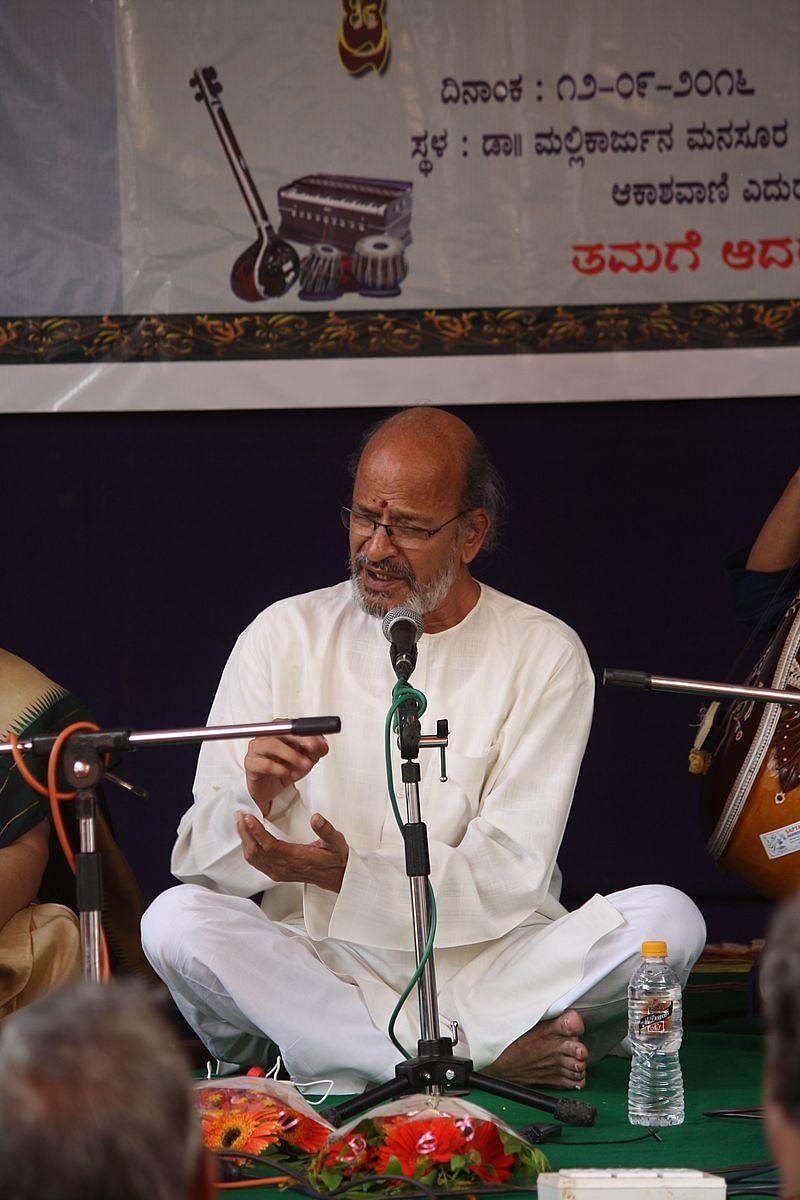
Pandit Rajshekhar Mansur, who passed away on May 1, was a doyen of the Jaipur gharana.
Son and disciple of the great Pandit Mallikarjun Mansur, Rajshekhar started his formal training relatively late. But by 20, he had not only won a gold medal in his music Visharad exam, but was also providing vocal accompaniment to his father. By his own admission, much of his advanced training happened this way. His teaching style was similar: he got his students to follow his singing without their having to hone specific smaller skills.
A careful listening to his recordings shows his steady progress as a vocalist. He was tentative in the earlier performances, and over the years, slowly but surely emerged out of the formidable shadow of his father. He evolved his own style, while retaining the essence of his father’s music.
Rajshekhar was not a full-time musician till retirement. Professionally, he taught English and retired as chairman of the English department, Karnataka University, Dharwad. Just his work there would have made his life fulfilling. But he also reached great heights in music, winning accolades such as the Rajyotsava Award in 1997, and the Sangeet Natak Academy award in 2012.
Rajshekhar’s mastery of the English language (and Kannada, of course) is evident in his superb translation of his father’s book, Nanna Rasa Yatre. Titled ‘Rasa Yatra: My Journey In Music’ in English, it is one of the finest autobiographies in Indian classical music, reflecting the simple nature of a great artiste and tracing his musical journey. The book hints about some tension between father and son, leading to a fallout. However, the prodigal son was to return, and later to carry forth the torch of his father’s music.
The English translation contains some passages added by Rajshekhar. They indicate a deep connection between the two about the finer aspects of music. One telling conversation is about the presentation of raga Gaud Malhar. There are two main compositions in this raga —‘Maan na kariye gori tumre kaaran’ and ‘Kahe ho ham so pritam ankehn pher daari’. In a profoundly insightful comment, Mallikarjun reveals that it is not aesthetically appealing to sing phrases emerging from the structure of one composition while singing the other.
On returning to the concert stage after retiring from an academic career, Rajshekhar became a prolific performer. He sang a wide variety of ragas. He mostly focused on rare ragas and Jaipur specialities such as Barari, Ek Nishad Bihagda, Meera Ki Malhar, Adambari Kedar, Lajwanti and Meghavali, all of which he sang with authority. When he did sing more mainstream ragas, such as Shree and Raga Multani, they were excellent performances and revealed a glimpse of his father’s Gwalior antecedents.
Rajshekhar showed a slight preference for uttarang-pradhan ragas (ragas sung in the upper register) and excelled at them. A case in point is his beautiful rendition of the canonical Jaipur cheez ‘Akhiyan mori lag rahi’ in raga Paraj.
Rajshekhar’s passing is an irreparable loss to the Atrauli-Jaipur gharana and Hindustani music in general. In some ways, his music belonged to an earlier era, echoing his father’s aesthetic. His masterly presence will be missed.
When he played his father
Rajshekhar played his father in Shyam Benegal’s documentary on Mallikarjun Mansur. The casting is a master stroke. The son fits into the role naturally, without the need for overt similitudes — he didn’t even have to shave his beard! The bits where he sings in the voice of his father are deeply emotional.